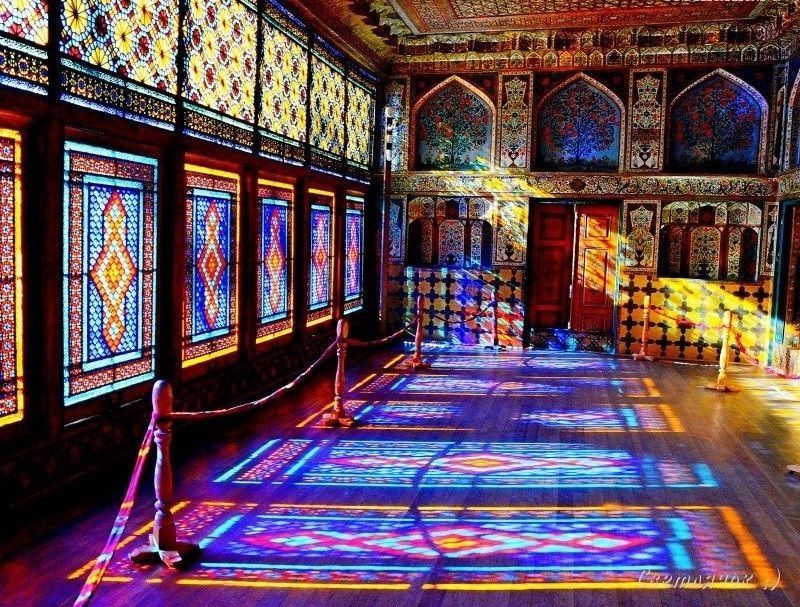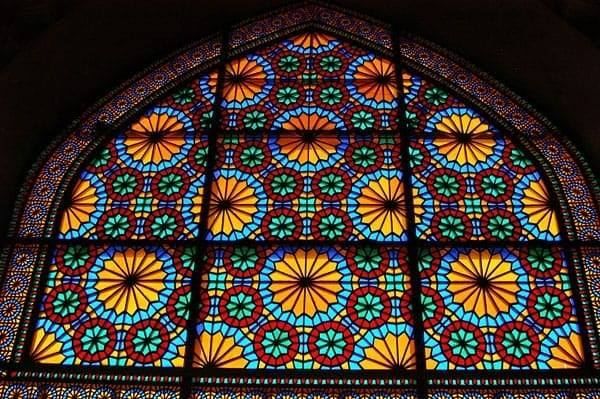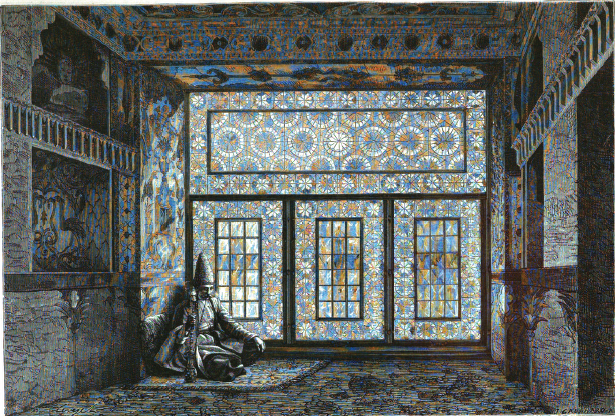|
|
TODAY.AZ / Arts & Entertainment
Explore rich legacy of shabaka art in Shaki and Shusha
22 January 2024 [17:57] - TODAY.AZ
 Laman Ismayilova
Laman Ismayilova
Azerbaijani decorative and applied art has a thousand-year history and rich artistic traditions.
Shabaka, also known as stained-glass windows, take a special place in Azerbaijani art and history, Azernews reports.
Stained glass work known as shabaka are windows filled with colored glass, created by national Azerbaijani masters from small wooden parts without glue and nails.
This intangible cultural heritage has been used in the architecture of Azerbaijan since the 11th and 12th centuries.
The unique art form was widespread on the territory of Azerbaijan, especially in Shaki, Shusha, Ordubad, Baku, Ganja, Lankaran, and Nakhchivan.
Shaki Khans' Palace
Shaki Khans' Palace is a remarkable example of shabaka art. In 2019, the Historic Centre of Shaki with the Khans' Palace was inscribed as a UNESCO World Heritage Site.

This majestic royal palace was built in the 18th century without a single nail, with luxurious wall paintings and openwork windows.
Stained-glass windows in the central halls and side rooms open on the facade. These stained-glass windows are a special feature of the palace's architecture.
The summer residence is renowned for its majestic interior. Large portions of the facade of the residence, including the entire southern elevations of the central halls on both floors, are covered by a mosaic of colored glass set in a wooden latticework (shabaka).
The interior walls of the residence are covered entirely with frescoes painted at different times during the eighteenth century.
Shabaka art in Shusha
There were numerous residential stone houses of the 18th and 19th centuries, decorated with shabaka, in the city of Shusha.
In the second half of the 19th century, Shusha turned into a cultural centre not only for Azerbaijan but also for the entire Caucasus and was distinguished by its architectural beauty.

Every Azerbaijani house has always had relatively large guest rooms, the design of which was given special attention.
In the 19th century, the guest rooms' design in Shusha included shabaka windows.
The windows in these houses, made in the shabaka style with multi-colored glass, were a source of special pride for the people of Shusha.
The notes of travellers repeatedly indicated that the large houses in Shusha differed from the houses of other Caucasian cities in their landscaping and design.

An excellent confirmation of this are the sketches of the Russian artist Vasily Vereshchagin, who visited Shusha in 1865.
Famous folk craftsmen like Mehdi Mehdiyev (19th century), Shahbuzla Abuzer Badalov (18th-19th centuries), and Abbasgulu Sheki (19th century) significantly contributed to the preservation of Azerbaijan's traditional stained-glass art
The revival of this art in the 20th century was facilitated by Abdulhuseyn Babayev (1877–1961) and Ashraf Rasulov (1928-1997).
Today, shabaka art continues to live thanks to talented craftsmen who astonish art aesthetes with incredibly beautiful stained-glass windows.
URL: http://www.today.az/news/entertainment/243889.html
 Print version
Print version
Connect with us. Get latest news and updates.
See Also
- 30 December 2025 [13:21]
Cadenza Orchestra performs music pieces by Azerbaijan's contemporary composers - 30 December 2025 [12:03]
Uzeyir Hajibayli's immortal operetta leaves audience in awe - 30 December 2025 [11:02]
Baku Music Academy holds roundtable in honor of prominent scholar - 29 December 2025 [15:00]
Arzu Aliyeva and Alena Aliyeva attend exhibition titled “10 Years Lived in Colors” - 29 December 2025 [14:19]
Pop-Symphonic Orchestra thrills music lovers in Shamakhi - 29 December 2025 [13:02]
Philharmonic Hall holds concert timed to World Azerbaijanis Solidarity Day and New Year - 29 December 2025 [12:28]
Jubilee event marking 75th anniversary of Professor Ibadulla Aghayev held in Baku - 29 December 2025 [10:00]
Baku Music Academy holds concert-conference 'Shainsky-100' to mark composer'?s centennial - 28 December 2025 [23:00]
Gabala State Historical-Artistic Reserve holds festivity for children - 28 December 2025 [21:15]
World Azerbaijanis Solidarity Day celebrated in Tashkent
Most Popular
 The inconvenient truth: who actually owns the road through Meghri
The inconvenient truth: who actually owns the road through Meghri
 New era in Central Asia–Japan relations: CA+JAD Tokyo Summit [OPINION]
New era in Central Asia–Japan relations: CA+JAD Tokyo Summit [OPINION]
 Azerbaijan sees weekly jump in gold prices
Azerbaijan sees weekly jump in gold prices
 Babayan breaks silence as Garabagh Armenians’ fate becomes political weapon
Babayan breaks silence as Garabagh Armenians’ fate becomes political weapon
 “Jirtdan Mega Show” held for children in need of special care at Leyla Aliyeva’s initiative
“Jirtdan Mega Show” held for children in need of special care at Leyla Aliyeva’s initiative
 Azerbaijan observes Lawyers' Professional Day
Azerbaijan observes Lawyers' Professional Day
 Azerbaijan allocates 9 mln manats for free legal aid next year
Azerbaijan allocates 9 mln manats for free legal aid next year
